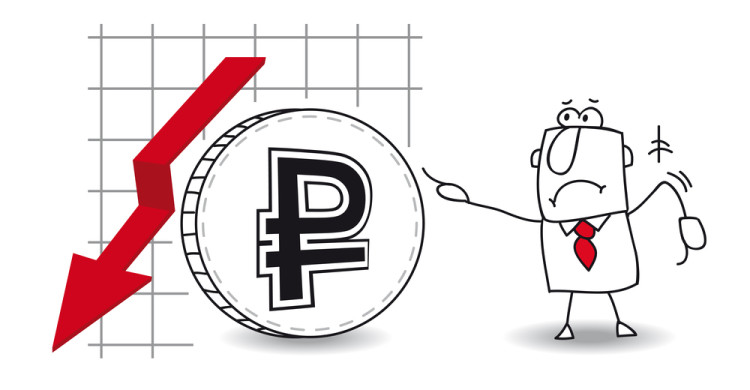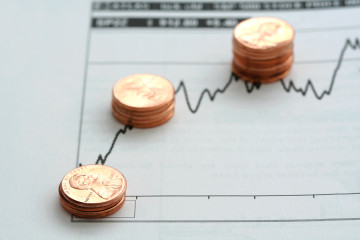Bloomberg Business: Russia Gets Golden Gain as Ruble Drags Costs Down: Commodities

Copyright 2015 Bloomberg.
NJ7TJP6KLVRT
(Bloomberg) — The ruble is crashing. Oil is at a five-year low, and economic sanctions have slammed the brakes on the economy. It’s a good time to mine gold in Russia.
With gold typically priced in dollars, and labor and other expenses paid in rubles, Russian mining companies led by Polyus Gold International Ltd. are gaining from the weak currency. It doesn’t hurt that the price of gold globally has gained about 6 percent this year as slowing world economies spur demand for the metal.
Russia is the biggest producer after China and its mining companies now have the lowest costs in the world, according to BCS Financial Group, a Moscow-based investment company. What’s more, the country’s central bank is buying up gold from domestic companies as efforts to curb the economic crisis decrease its foreign currency reserves.
“This year may become historically best for the Russian gold producers in terms of margins,” said Kirill Chuyko, head of equity research at BCS Financial, in a telephone interview. “Even despite the double-digit inflation, their costs may decline as much as 25 percent this year.”
Still, gains so far may not continue as strongly in the future, according to Natalia Orlova, chief economist at Alfa Bank in Moscow. The central bank’s gold reserves may now be adequate, she said, and its gold purchases may not climb at the same pace as in 2014.
“By boosting gold purchases, the central bank reacted on sanctions,” Orlova said by telephone. “The regulator just wanted to diversify its international reserves basket away from dollars and euros as the relations with the U.S. and Europe turned into crisis.”
15 Percent Lower
Because of the falling ruble, the cost to extract gold in Russia was about 15 percent lower than the global average, which GFMS, a research unit of Thomson Reuters Corp., estimates at $736 per ounce. Bloomberg competes with Thomson Reuters in selling financial and legal information and trading systems.
Polymetal International Plc, Russia’s second-largest precious metal miner, had average production costs as low as $625 an ounce in 2014, the company said last month. That may fall to $575 an ounce this year. Polyus Gold International Ltd., the country’s top supplier of the metal, recorded $654 in per- ounce production costs for the year, according to BCS Financial.
Polyus shares have gained 8.7 percent this year, and Polymetal is up 4.2 percent.
While Polyus declined to comment on its costs, Polymetal Chief Executive Officer Vitaly Nesis said in a Jan. 29 phone interview that “Russia enjoys the lowest level of production costs now, due to the ruble’s plunge.”
Russia’s Advantage
Russia’s advantage in gold mining will grow this year as the ruble continues its slide. After falling 46 percent against the dollar in 2014, it’s slumped almost 7 percent this year. In dollar terms, Russian gold producers have room to cut costs by as much as 25 percent, BCS estimated.
The impact of Russia’s currency crash can be seen in gold prices, in rubles. In January 2014, gold averaged about 42,000 rubles an ounce. A year later it had almost doubled to about 80,500 rubles.
Meanwhile, the Bank of Russia is stockpiling gold to maintain reserves as it depletes its holdings of dollars, euros and other foreign currencies.
As the ruble tumbled, President Vladimir Putin said the central bank should manage its reserves carefully and warned in December against burning through its reserves “thoughtlessly.”
The bank spent about $88 billion last year in an effort to prop up the ruble. At the same time its gold hoard increased to 38.8 million ounces at the end of 2014, the most in at least two decades, according to International Monetary Fund data. That’s valued at almost $50 billion at current prices.
Output Rising
With strong demand and prices rising, gold output in Russia is increasing.
Production rose by about 8 percent in 2014 to 275 to 280 tons (9.7 million to 9.9 million ounces), worth as much as $12.5 billion at current prices. That pushed Russia past Australia to become the second-largest supplier, said Sergey Kashuba, head of Russia’s Gold Producers Union. Output may increase another 2 to 3 percent this year, he said, and the Ministry of Natural Resources said Feb. 2 that 2015 production may reach 300 tons.
The benefits of a weak ruble may eventually be undermined by inflation, as costs of imports climb and workers demand higher salaries to compensate, Nesis said on a Jan. 29 conference call with investors. Polymetal assumed a range of CPI inflation of 10 percent to 35 percent.
Inflation in Russia reached 11.4 percent in December and may peak at 15 percent to 17 percent in March or April, Deputy Economy Minister Alexey Vedev said in January.
To contact the reporters on this story: Andrey Lemeshko in Moscow at alemeshko@bloomberg.net; Yuliya Fedorinova in Moscow at yfedorinova@bloomberg.net To contact the editors responsible for this story: Will Kennedy at wkennedy3@bloomberg.net Will Wade







No Comment